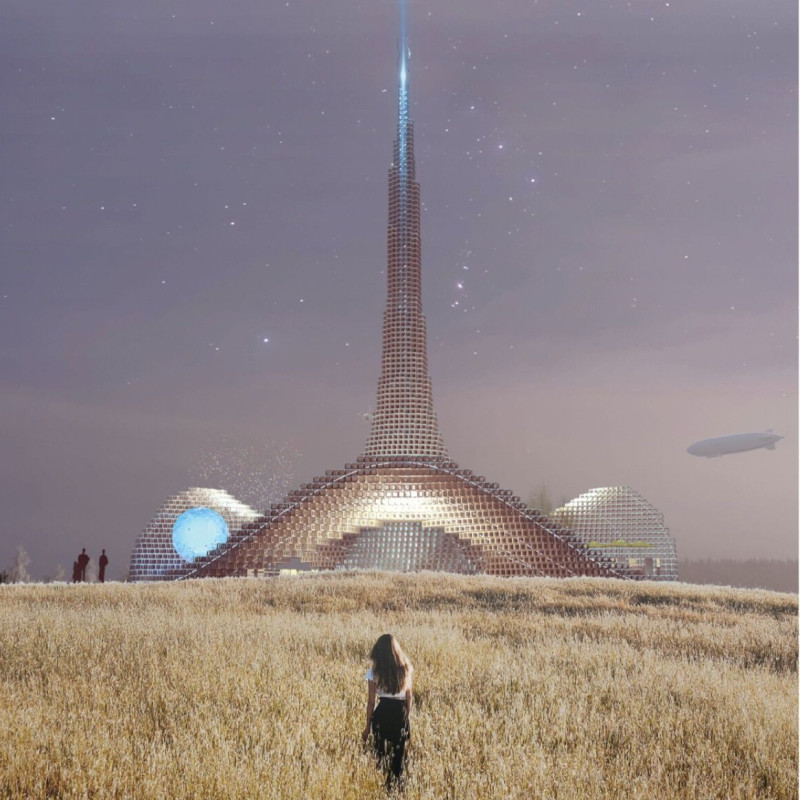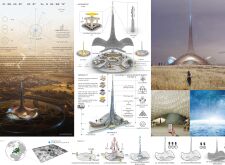5 key facts about this project
The pavilion titled "Crop of Light" is located in Glastonbury, UK, a place known for its deep historical and spiritual background. Functioning as a community space, it accommodates performance areas, workshops, galleries, and a café. The design is rooted in the Seed of Life, an ancient symbol that influences its geometric form while capturing themes of creation and the connection between humanity and the universe.
Design Concept
- The design integrates elements from historical architecture, creating a blend of past and present influences. The pavilion represents not just a structure but a narrative about the continuity of life. Each geometric aspect serves to enhance the experience of those who visit, promoting moments of reflection and interaction.
Spatial Arrangement
- Interconnected areas within the pavilion support a range of activities, encouraging community participation. The layout allows visitors to easily move between spaces, fostering engagement while providing opportunities for personal contemplation. Consideration of circulation patterns ensures a simple yet effective flow throughout the entire building.
Material Considerations
- Attention to sustainability is evident in the materials chosen for the pavilion. Key materials include locally sourced wood, which forms the structure, and straw, used for the roofing. These choices highlight a connection to the nearby environment. Gold also features as a cap on the top voxel, introducing a visual element that carries symbolic meaning.
Environmental Integration
- The pavilion employs alternative energy solutions, such as wind and solar power, which are designed to minimize its ecological impact. A notable aspect is the beam of light that rises from the center and extends into the sky. This feature illustrates a connection to the cosmos and serves as a focal point within the design, connecting the structure with its historical and natural surroundings.
The overall design reflects a balance of form and function, creating an inviting space that resonates with the site’s spiritual heritage. Light plays a significant role in the experience, casting patterns that enhance the pavilion's visual character while enriching the atmosphere within.


















































